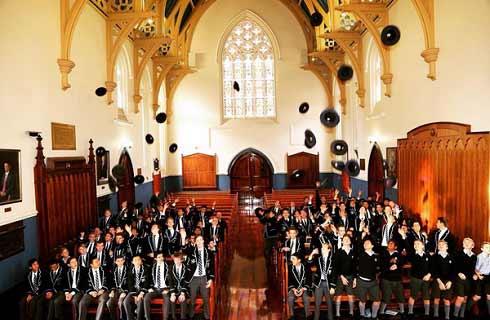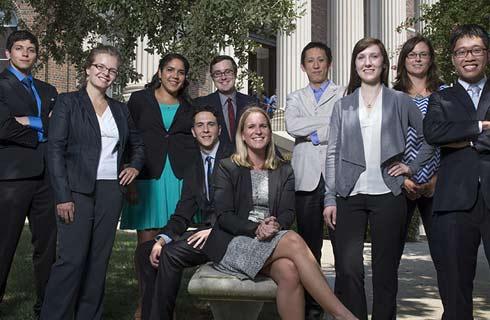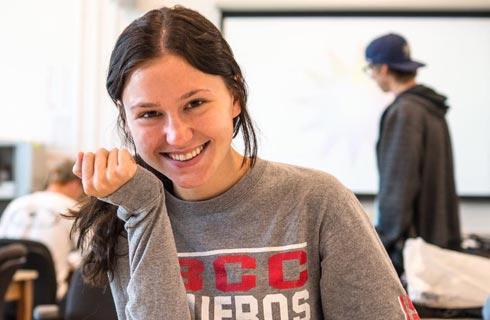美术硕士,陶瓷
Master of Fine Arts in Art- Ceramics

学历文凭
Masters Degree

专业院系
Department of Graphic Design

开学时间

课程时长

课程学费

国际学生入学条件
IDP—雅思考试联合主办方

雅思考试总分
6.5
- 雅思总分:6.5
- 托福网考总分:80
- 托福笔试总分:550
- 其他语言考试:NA
CRICOS代码:
申请截止日期: 请与IDP联系 以获取详细信息。
课程简介
Formed by hand, clay documents the maker’s touch. The eye defines the form and the mind and the heart give the work of art its meaning. The very personal rendering of its elements is what makes a work of art unique. Ceramics at Penn State welcomes both functional potters-and sculptors alike. It provides each student with the tools needed to find and pursue his or her artistic vision in a professional manner.<br><br>In order to lay a foundation of technical knowledge we teach traditional ceramics techniques including, clay mixing, hand-building, wheel throwing, mold making, slip casting, glazing, and kiln firing. Building on these basic techniques, the student is gradually encouraged take ownership of where heshe finds indispensable meaning. Readings, discussions, slide presentations, and visiting artists, augment this process. Diverse faculty interests and approaches add to the educational experience by providing a wide swath of reference materials, which include contemporary theory, artists, exhibition practices, and criticism. Attendance and participation in related conferences and symposia is seriously encouraged. Over time, the making process takes on a life of its’ own. Craft and art conventions merge, sometimes leading to investigations outside of those strongly embedded in the traditions of ceramics. The cross disciplinary nature of a diverse art education builds freely upon the foundational knowledge learned at the front end.<br><br>At all levels, ceramic history and contemporary art criticism are taught in conjunction with working techniques arid practical studio skills to enable the students to graduate as thinking artists with a notion of their own artistic voice. Many of our alumni have been offered a variety of professional opportunities including graduate school, residencies, apprenticeships, and teaching opportunities. A great percentage continue in their ceramic art making. Ceramics at Penn State has artistic professionalism at its core.
相关申请
 预科
预科 奖学金
奖学金 实习机会
实习机会 在校学习
在校学习 跨境学习
跨境学习 校园授课-线上开始
校园授课-线上开始 在线/远程学习
在线/远程学习
开学时间&学费
学费信息仅供参考,请与IDP联系以获取详细信息
| 开学时间 | 时长 | 学费 | 地点 |
|---|
学校排名

世界排名78
数据源:
泰晤士高等教育世界大学排名
关于宾州州立大学帕克分校

每122位本科毕业的美国人中就有1个是PSU的校友1855年建校的宾州州立大学目前已经有了24个校区,University Park是其中的旗舰校区,也是规模最大的校区,容纳学生45000余人。距离宾州州府Harrisburg仅仅17英里的地理位置优势让University Park成为最受欢迎的PSU校区,同时也成为了录取率最低的校区。Party School的称号在PSU身上由来已久,但同时,每年专程跑到PSU校内面试应届毕业生的公司和政府部门超过1000个,这里的学术水准绝对不是盖的。美国每50个工程师中,就有1人是PSU的毕业生PSU的理工课尤其是工程学专业非常知名。实际上从1988年开始,PSU从工业界拿到的学术研究资金总额一直排名美国所有大学的前两位,仅次于麻省理工。很多工业界企业干脆直接将产品研发放在PSU进行。另外,地球与矿产科学学院在美国同类学院中排名第6,其中的地理专业全美第一,地质专业全美第三,均属世界一流学科项目。理论性大众传媒专业同样排名全美第一,与哥伦比亚大学的应用型大众传媒并驾齐驱。 Penn State-University Park的申请竞争相当激烈。申请材料中主观性的PS与简历部分属于非要求项。实际上,每年,单纯从成绩角度做出的录取决定占总录取人数的2/3。所以,想去PSU,得先保证有一个靠谱的标准化成绩。
本校相关课程
其他相关课程

Certificate in Ceramics
 希科学院
希科学院学历文凭
Bachelor Degree
开学日期
课程费用总额


陶瓷工程哲学博士
 密苏里科学技术大学
密苏里科学技术大学学历文凭
Ph.D.
开学日期
课程费用总额


Master of Science in Materials Science and Engineering - Glasses and Ceramics
 伦斯勒理工学院
伦斯勒理工学院泰晤士高等教育世界大学排名:554
学历文凭
Masters Degree
开学日期
课程费用总额


Master of Fine Arts in Studio Art - Ceramics
 佛罗里达州立大学
佛罗里达州立大学泰晤士高等教育世界大学排名:308
学历文凭
Masters Degree
开学日期
课程费用总额


陶瓷工作室视觉艺术证书
 诺瓦艺术与设计大学
诺瓦艺术与设计大学学历文凭
Graduate Certificate
开学日期
课程费用总额


Bachelor of Arts in Studio Arts - Ceramics
 阿拉巴马大学
阿拉巴马大学学历文凭
Bachelor Degree
开学日期
课程费用总额
















